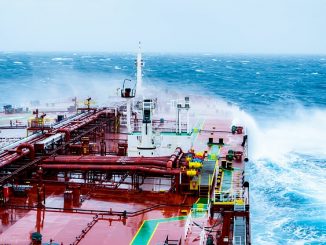John Wooden — the late, great UCLA basketball coach — once said, “Things turn out best for the people who make the best of the way things turn out.”
With coach Wooden’s advice in mind, let’s think positive. Let’s review the upside of the resource news flow.
Hey, oil prices are stable. The Brent crude oil price is hovering in the low $100 range, while North American oil prices — embodied in the price for West Texas Intermediate (WTI) — are $10 less, give or take.
Of course, OPEC oil exporters hate $100 oil…
That’s because most of the OPEC producers need much higher prices to balance their national books. That addiction to oil income is part and parcel of leaders allowing their respective countries to evolve into petro welfare states. The usual Middle Eastern names come to mind, although even Russia has an oil problem.
Russia is entering a recession after two years of stagnant or declining economic growth. Some of this is blowback from the overall chronic weakness in Europe. Still, on the best of days, Russia’s economy is overly dependent on income from exporting oil, natural gas and mineral commodities, without much in the way of value-added manufactures (aside from weapons, which is not entirely a good thing, either). Meanwhile, inflation in Russia has doubled, and its stock market has lost nearly 15% in value so far this year.
Can energy exporters just turn the valves, lower output and ship out less oil in order to goose up the price? Not likely. For the most part, you lose more by not exporting a $100 barrel than you gain from any increase by a couple of dollars for the rest of the tanker load. Plus, it’s hard to rig the oil game anymore, for reasons I’ll detail in a moment.
Absent one-off, supply-killing events like war (think Iran) and/or big natural disasters (think hurricanes in the Gulf of Mexico), oil prices don’t appear to have upward spikes built in, or nasty tumbles ahead, either.
On the demand side, the global economy is growing slowly, where it isn’t stalled or shrinking. To the extent that oil supply balances nicely with overall demand, we can thank the North American fracking revolution. Hold that thought.
Overhauling the World Oil Patch
From the 1960s to about the early 2000s, the developed world — North America, Western Europe, Japan and Australia — adopted a historically novel approach to obtaining oil. That was to dabble in limited local and regional energy production (the traditional U.S.-Canadian oil patch, or the North Sea in Europe), but import the bulk of energy needs from distant, unstable lands — you know the names.
Compounding the problem, those distant, unstable lands are inhabited by people we don’t truly understand. So the developed West wound up paying lots of money to far-off strangers, and on many occasions (some say “too many”) became deeply engaged in ancient tribal hostilities. It’s part of the “oil war” scenario that I’ve covered before.
Within the last decade, though, the modern model of letting others do the dirty work, in supplying oil, simply broke down. Part of it was the rise of China as a competitor for the same energy supplies. With China buying oil, the substance became far more valuable in real terms.
Another part of the breakdown was the general decline of Western economies and currencies due to fiscal and monetary mismanagement. Weak currencies fed the nominal price rise for oil — starting with the original OPEC price shock of 1973, which I’m old enough to recall vividly. Then, over the next 40 years or so, energy got very expensive (with ups and downs along the way, to be sure). And along came fracking.
Now we’re about five years into a total overhaul of the global oil patch, starting with the U.S. and Canada, and eventually extending overseas. Fracking has unlocked immense volumes of heretofore “tight” oil and natural gas, much to the chagrin of Western politicians and Eastern OPEC potentates (see above).
I’ve discussed fracking many times in these pages, and it’s an ongoing theme. Fracking is how the oil industry has responded to the back side of the classical Peak Oil curve. It involves applying high levels of capital and technology — a “manufacturing” model, actually — to liberate tightly bound hydrocarbon molecules from rocks.
Fracking is industrially complex, but it’s here to stay. You need to understand it, if not to love it. That, or freeze to death in the dark. (Your choice, of course.)
Environmentally, fracking is not nearly as bad as its most vicious opponents claim. That is, much opposition to fracking is based on a bizarre, faux-environmentalist (think Marxist redux) ethic of greed and envy, because fracking goes against their “world-improving” goal of controlling people and events by limiting access to energy and capital.
Indeed, many fracking opponents are utterly shameless in their lies, although in fairness, I should add that large numbers of fracking opponents are just horribly misinformed by raw propaganda.
But fracking is not all wine and roses, either, because operators need to do it right. In the “do it right” department, the usual suspects are big oil service companies that are critical to keeping the barrels coming out of directional, multistaged, fracked wells.
And don’t forget offshore.
Fracking aside, the offshore arena also contributes a critical component of global oil production. There’s more and more development offshore (and far from OPEC), and there’s really only one way to do it — which is ultra-safely. As we learned three years ago with the BP blowout, failure is a company-busting event.
This discussion of fracking and offshore support companies doesn’t begin to get into the array of large- and intermediate-sized oil operating companies that are pushing an eye-popping number of new projects. Collectively, operators are moving the edges of many an envelope for new technology in both the fracking and offshore world.
The Barrels Are Coming
The bottom line is that for the foreseeable future, more and more barrels are coming from more and more wells, albeit many wells have distressing decline curves. Yes, it means that we’re on a drilling treadmill, but at least it’s “our” treadmill and under local political control.
Looking ahead, North American oil will add more and more to our continental-scale energy security — which is NOT the same thing as so-called “energy independence,” a silly and confusing term. That is, the U.S. is still importing oil and will do so for a long time to come. But every new barrel from, say, Texas or North Dakota displaces a barrel from Angola, Nigeria or Venezuela. The OPEC guys just have to deal with it.
Oil traders might hate energy price stability, but I like this period of predictable supply and price. So do motorists like you, I suspect, as well as truckers, railway managers, airline executives, ocean shippers, refiners, chemical plant operators, utilities, manufacturers and more. The bottom line is that the energy world is looking good, at least for now.
- Bulenox: Get 45% to 91% OFF ... Use Discount Code: UNO
- Risk Our Money Not Yours | Get 50% to 90% OFF ... Use Discount Code: MMBVBKSM
Disclaimer: This page contains affiliate links. If you choose to make a purchase after clicking a link, we may receive a commission at no additional cost to you. Thank you for your support!




Leave a Reply